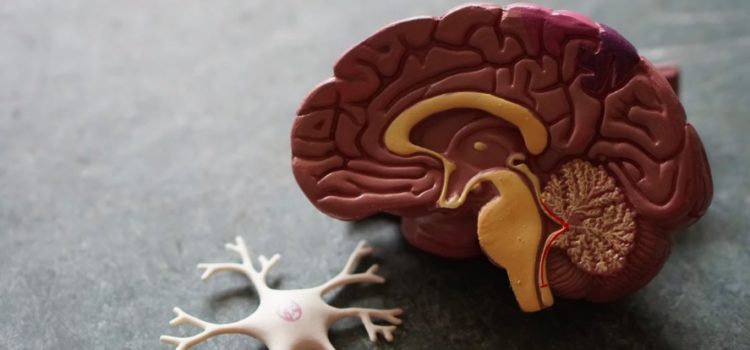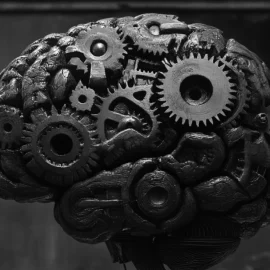

This article is an excerpt from the Shortform book guide to "The Biology of Belief" by Bruce Lipton. Shortform has the world's best summaries and analyses of books you should be reading.
Like this article? Sign up for a free trial here.
How does your body’s electromagnetic energy influence your cells? What’s the importance of Bruce Lipton’s subconscious mind research?
Your subconscious mind is running the show, whether you know it or not. According to Bruce Lipton’s book The Biology of Belief, your electromagnetic energy and subconscious mind have more influence on your body than anything else.
Continue reading to understand more about your cells’ behavior and health.
Energy Influences Matter
It’s not only your body chemistry that influences your cells—it’s also your body’s electromagnetic energy and subconscious mind. Bruce Lipton says the Western scientific worldview tends to ignore the role of energy in health because it’s often not measurable and quantifiable. He points out that although research has shown that living matter does energetically influence other living matter, scientists tend to reject this research as unscientific because they can’t conclusively explain how it works.
Lipton says that energy affects almost every aspect of cell behavior. Every biological process in your body is affected in some way by different frequencies and patterns of electromagnetic energy—including DNA regulation, cell division and differentiation, nerve growth, and hormone secretion. This is why stimulating the brain with electrical current, such as with electroconvulsive therapy (ECT), can be useful for mental health treatment.
(Shortform note: Although scientists don’t know how ECT works, they know that electrical stimulation to the brain causes seizures and changes the electrical and chemical functioning in the brain, leading to therapeutic effects. ECT has been shown to have antidepressant, antimanic, and antipsychotic effects, but the precise biological mechanisms are still under investigation.)
Lipton says every living organism interprets its environment by sensing energetic signals around it. This is observably true of cells, plants, and animals. Humans, however, have evolved to rely so heavily on verbal communication that most of us have lost conscious touch with our energy-sensing ability. Lipton points out, though, that some indigenous peoples who still live their traditional lifestyles have retained this ability and demonstrate hypersensitivity to the energy around them.
(Shortform note: While it’s essential to avoid generalizations about indigenous peoples, anthropological research does show that our lifestyles can affect our sense perception. For example, a recent study showed that the Himba people of Namibia who live a more traditional land-based lifestyle have much better visual acuity and attention to detail than people living in modern urban societies.)
Lipton emphasizes the importance of understanding that brain wave states are energy operating at different frequencies, and these contribute to your health and well-being. When your brain wave state changes, Lipton explains, you can change the communication and environmental signals happening throughout the body. In particular, he stresses that understanding brain wave states is crucial for tapping into the subconscious mind, where most of our problems actually originate.
Your Subconscious Program Is Running the Show
Lipton argues that your mind, rather than your DNA, is the source of your behavioral programming. More specifically, he says the most influential force in your life is the beliefs embedded in your subconscious—programming that was firmly in place by the time you were six or seven years old.
Lipton explains that our brains are particularly programmable before age seven because children at this age are generally in a different, more receptive, brain wave state than adults. Our brain waves change throughout life like this:
- Birth to age two: Babies’ brains are in a delta wave state for most of their first two years of life.
- Ages two to six: Children in this age range have increasing periods of theta wave states.
- Ages seven to 12: Alpha wave states tend to dominate.
- After age 12: We spend most of our waking lives in beta wave states.
The theta wave state is associated with hypnotism and deep meditation. This is when information can go directly to the subconscious mind. So because children are often in this state before age seven, they absorb everything around them and it becomes stored in their subconscious. This means that we live the rest of our lives based on beliefs that were instilled in us by other people before we were even seven years old.
The problem with that, Lipton argues, is that many of those beliefs are negative and limiting, cause us stress, and they conflict with what we consciously want to do with our lives—especially if we’ve experienced trauma in childhood. Most children at some point absorb messages that the world is unsafe and threatening, that they’re unloved or unworthy, that many possibilities are not open to them, or that the world is full of illness, violence, and death.
Lipton clarifies that parents aren’t to blame for this—most parents love their children and do the best they can with the programming they received. Children absorb these messages from the social environment as a whole, even when they do have loving parents.
Recall that your mind is constantly interpreting your environment and sending signals to all of your cells. Lipton says it’s largely your subconscious mind that’s doing this interpreting. This means that where you may consciously perceive no threat at all, your subconscious mind may be reacting to information programmed into you as a child and interpret the world through a lens of fear and insecurity. This can drastically affect your health by causing chronic stress.
Lipton says that while you may consciously believe you’re competent and intelligent, you may have been subconsciously programmed to believe you’re stupid and incapable of success. This will undermine your confidence and your chances for success in life without your even being aware of it. He believes that most of our disease, suffering, and inability to achieve what we want in life is because this subconscious programming controls us much, even more so than our genes and our conscious mind.
Change Your Brain Waves to Change Your Programming
In Becoming Supernatural, Joe Dispenza explains brain wave frequencies as follows:
- Beta waves: In your regular, waking consciousness, your brain tends to be in a beta wave state most of the time. This can include:
- Low-range beta waves: when you’re relaxed and not perceiving any threat in your environment, but you’re still alert—for example, when you’re chatting with a friend or playing with your child.
- Mid-range beta waves: a more alert state when you’re slightly aroused but not terribly stressed—for example, when you’re driving in an unfamiliar city or doing a presentation at work.
- High-range beta waves: when you’re in a high-stress state, such as road rage or in fear because you feel threatened.
- Alpha waves: Your brain is in an alpha wave state when you’re very relaxed, calm, and creative. You may slip into alpha wave states throughout your day if you engage in meditative or creative practices that allow you to get out of your thoughts and into a calm “flow” state.
- Theta waves: Your brain slips into theta wave state when you’re in that zone between waking and sleep—or when you’re in deep meditation.
- Delta waves: This is the brain wave state you’re in when you’re asleep, but very adept meditation practitioners can also go into delta wave states while awake.
- Gamma waves: Dispenza calls this brain wave state a “superconscious” state. It’s associated with intense focus and transcendental and mystical experiences.
Dispenza explains that to tap into your subconscious mind, you must train your brain through meditative practices to drop into the lower-frequency brain wave states. This is because those are the states in which you access your deepest subconscious programming. He says when your brain waves change from beta to alpha, theta, and delta, your autonomic nervous system reacts differently to the world. Rather than responding to the world with stress and fear, it responds in a healthy way, which will keep you from responding to life through the lens of the past.
In terms of frequency, gamma brain waves are the highest-frequency wave, followed by beta, alpha, theta, and delta (the lowest-frequency wave). Most people only ever experience brief fleeting moments of gamma waves, lasting less than a second—for example when you have a momentary experience of blissful surprise, like the first bite of a delicious food. But some very experienced meditators have been shown to stay in gamma wave patterns throughout their whole day. This indicates that they exist perpetually in a different state of consciousness than the average person.

———End of Preview———
Like what you just read? Read the rest of the world's best book summary and analysis of Bruce Lipton's "The Biology of Belief" at Shortform.
Here's what you'll find in our full The Biology of Belief summary:
- That your mindset matters more than your genetics when it comes to health
- How your thoughts affect your immune system and hormones
- Why humans should join together in a community to aid survival







Thanks Katie